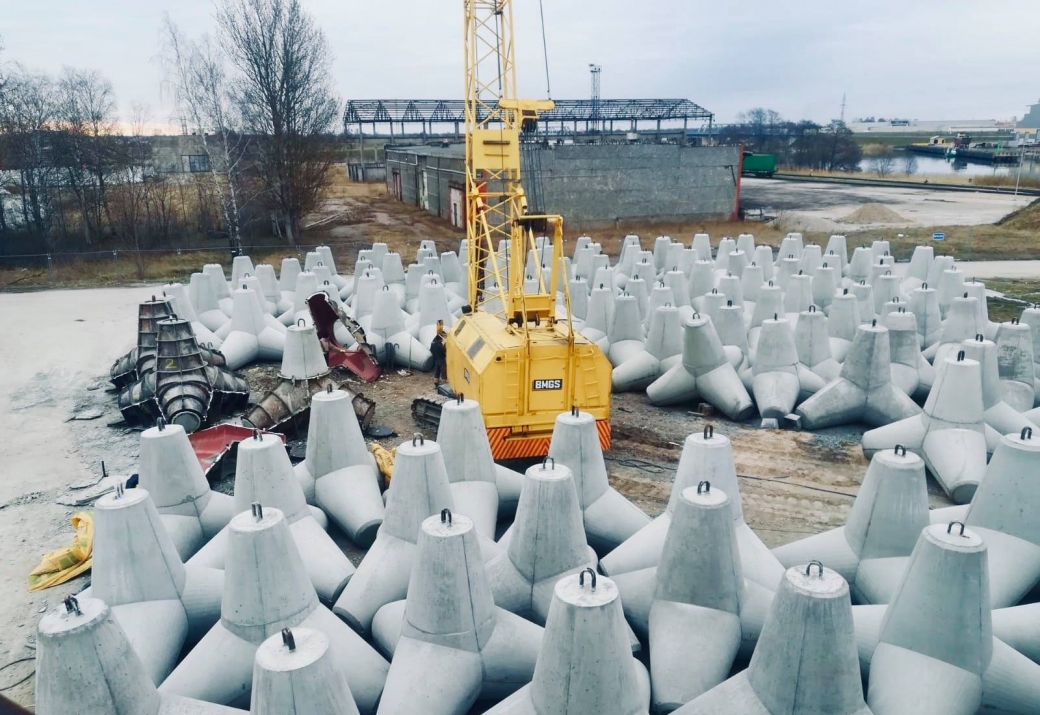Restoration of the Northern breakwater of Ventspils Freeport
Customer: Freeport of Ventspils authority
Latvia
Start date: December 2018
Finish date: current project
Northern breakwater of Ventspils freeport is one of the most strategically important hydrotechnical structures not only of its home port, but of a whole state scale, stretching into the open sea for 1.5 km and therefore protecting the port from waves, glaciers and sand drifts. Unlike its neighbor, near located Southern breakwater, that has gained status of a prominent walking spot, Northern breakwater is the one of restricted access, that is accounted for the close proximity of terminals in which ammonia, oil and chemical products are relayed.
Within the framework of the restoration of the Northern breakwater, JSC "BMGS" is not only the main contractor, but also the main manufacturer of required in restoration process reinforced concrete structures - massives and tetrapods. In total, there will be manufactured 2150 units of T5 tetrapods; 855 units of T13 tetrapods and 220 units of concrete massives with a weight of 45 tons per item. Total volume of manufactured concrete structures reaches up to the mark of 18 000 m3, that is nearly 3 times more than for similar works at the Southern breakwater. In addition to manufacturing and assembly works, there will also be carried out works on installation of drainage system of a fractionated stone with its excavation in amount of 13 946 m3 and backfilling in amount of 9 500 m3; monolitization of breakwater section; gravel road restoration, sheet pile wall installation and installation of engineering networks. Within the restoration process, huge attention has been paid to the long-term and flexible organization and planning of construction works and resources – since the object is located near to the terminals, construction works can be performed only at specific “windows”.
Its present appearance, the breakwater has preserved since its construction time - more than hundred years ago. Last restoration was undertaken in 70-s and 90-s of last century; therefore the current restoration is the most extensive it has ever experienced.

